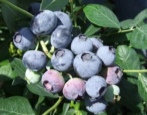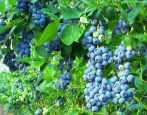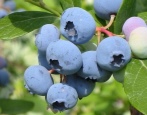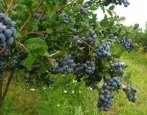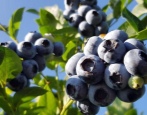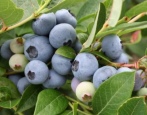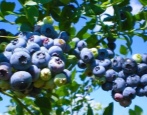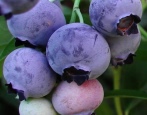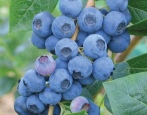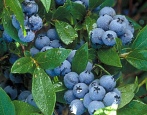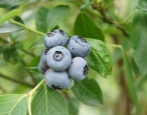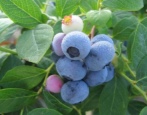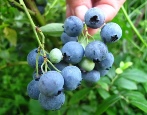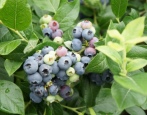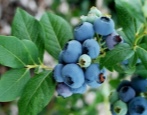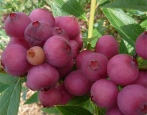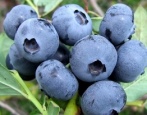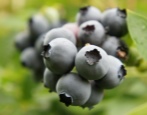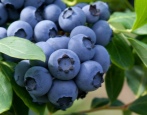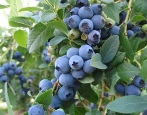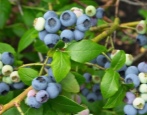
- Ripening terms: mid-late
- Growth type: tall
- Bush height, m: 1,6–2
- Taste: very sweet
- Yield: high
- Average yield: 3-6 kg per bush
- Fruit size: average
- Fruit shape: rounded
- Fruit color: dark blue
- Description of the bush: spreading, raised
Jersey is one of the oldest blueberry varieties. This plant dates back to 1928, which means that gardeners have had enough time to appreciate all its advantages and disadvantages.
Description of the variety
Jersey is a tall bushes, often reaching two meters in height. The width of the shrub can be up to 2.5 m. Plants have fibrous and very branched roots, which are located shallowly. They begin to grow in the spring, and growth stops in May. In the fall, when the harvest has already been harvested, the roots of the plant grow again.
The crown of the bush is spreading and slightly raised, the branches are distinguished by an upright type of growth. The leaf plates have a juicy and very rich green color; in the fall they turn red, acquiring a yellow tint. This makes the plant very decorative and helps to decorate the site.
The flowers are creamy white and rather small. During flowering, the aroma from the shrubs spreads for several meters, so there is no shortage of bees on the site.
Fruit characteristics
Rounded Jersey berries are medium in size. The diameter of one fruit is 16 mm. The berries are quite dense, colored in dark blue shades. The skin has a light bloom characteristic of blueberries. The harvested fruits can be stored well under the right conditions. There are no problems with their transportation.
Taste qualities
Jersey is one of the tastiest and sweetest blueberry varieties. Dessert berries, without even getting through them, you can already feel the bright aroma of the fruit. In most cases, the harvest is allowed for processing, creating a series of winter harvesting. Those fruits that are crumpled or overripe will make a wonderful filling for a cake or pie.
Ripening and fruiting
Jersey bears fruit in August as it is a mid-late crop. Gardeners remove berries from the bushes every year.
Yield
Jersey is a fairly productive blueberry variety. If young bushes give relatively few berries, then adults can get an average of 3 to 6 kilograms of harvest.
Growing regions
The country in which Jersey blueberry first appeared was America. There, this plant is very widespread, as well as in Canada. If we talk about closer places, then Jersey blueberries can be cultivated without problems in any region of the Russian Federation. It is also grown in Kazakhstan, Belarus.
Growing and care
Jersey is an undemanding variety, so even a novice summer resident can grow it. You need to plant plants that have reached the age of 2-3 years. Before planting, the roots are dipped in water for a quarter of an hour; without this procedure, the Jersey will take root badly. Separately, it should be said about the lower layer of the landing holes. It should consist of sour peat, dead leaves, detailed bark, sawdust. The growth point must be deepened, 5 centimeters will be enough.
The soil near newly planted bushes will need to be loosened frequently. They do this not after watering, but in front of him. During loosening, weeds are uprooted from the soil. The first months of watering should be very abundant - every 3-4 days.The water consumption will be about 5 liters. Then it will need to be watered once every 7 days, but adult shrubs will require an increase in dosage to 10 liters per plant.
With organic fertilizing, the culture must be fed very carefully. Most blueberry varieties do not tolerate organic matter at all, but this variety treats it quite favorably. But fertilizers still need to be chosen correctly. It is better not to take mullein, chicken droppings and similar feedings. Herbal infusions and ash will be much more useful. However, in any case, everything is brought in dosed and as needed.
Blueberries also react well to minerals. So, in the spring, some gardeners dissolve a tablespoon of ammonium sulfate in a bucket of water and water Jersey with this composition. Such a simple feeding activates crop growth well. Bushes that are already 2 years old can be fed with complex formulations twice per season.
Plants are cut from the second year. The procedure is carried out in the March period. Up to 6 years old, they form a crown of a bush, after which they carry out anti-aging haircuts. Sanitary pruning is usually done at the same time as shaping pruning.
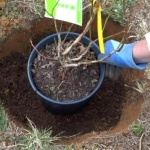
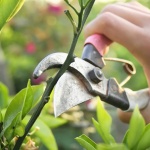
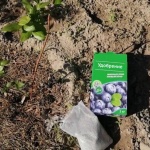
Disease and pest resistance
The plant has a strong immune system, so cases when it gets sick are extremely rare. You just need to properly care for the bushes, collecting fallen leaves and digging up the soil in the fall. If there are already diseased plants on the site, preventive spraying can be carried out for blueberries.
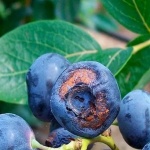
Winter hardiness and the need for shelter
Jersey has a winter hardiness limit of -35 degrees, but often the bushes can withstand lower temperatures. Plants do not need shelter, but in regions with very cold winters, this will be justified.
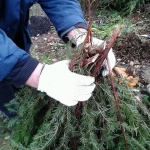
Location and soil requirements
Jersey doesn't like shading, so the growing area should be evenly lit throughout the day. Young plants should be protected from winds if they are a stable phenomenon in the region.
The culture prefers acidic, peaty soils. The presence of sand in the substrate is allowed. The soil should be loose and quickly allow water to pass through, which blueberries often need.
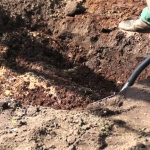

Review overview
Jersey is a culture that brings only positive emotions to gardeners. It grows quickly and well, pleases with its strong immunity and delicious sweet fruits. Berries can be transported without fear that they will lose their presentation.
However, it must be borne in mind that blueberries only love acidic soil. There are very few other such crops that would prefer a similar substrate, and not all of them are suitable for sites. In addition, plants must be fertilized very carefully.
